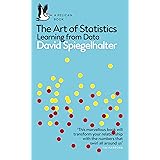Understanding Type I and Type II Errors
Understanding Type I and Type II Errors, When working with data, the goal is often to draw meaningful conclusions based on the available information.
To infer insights about a broader population from sample data, we rely on statistical hypothesis testing.
This method enables us to make informed inferences about populations using data samples, typically by setting up a null hypothesis and an alternative hypothesis.
What is Hypothesis Testing?
Hypothesis testing is a fundamental statistical technique used to evaluate whether there are significant differences between groups or relationships between variables.
For instance, in an independent t-test, we compare the means from two different groups.
- Null Hypothesis (H0): This specifies that there are no significant differences between the group means.
- Alternative Hypothesis (H1): This states that there is a significant difference between the means of the groups.
It’s crucial to acknowledge that hypothesis tests are based on underlying assumptions — such as the data’s normality and the equality of variances — which must be satisfied to ensure the validity of the test results.
Understanding Type I and Type II Errors
Despite the robustness of hypothesis testing, there’s always a risk of arriving at incorrect conclusions due to statistical errors.
There are two primary types of statistical errors:
- Type I Error: This occurs when we incorrectly reject the null hypothesis, resulting in a false positive conclusion. Essentially, we think there’s an effect when, in fact, there isn’t.
- Type II Error: This happens when we fail to reject the null hypothesis when it is false, leading to a false negative conclusion. In this case, we miss detecting an effect that actually exists.
Visual aids can effectively illustrate type I and type II errors, making these concepts easier to grasp.

What is Statistical Power?
Statistical power is defined as the probability of correctly rejecting a false null hypothesis, essentially measuring our ability to detect an effect when there truly is one.
If the likelihood of a type II error is denoted as β (beta), then statistical power can be represented as 1 – β.
Higher statistical power indicates a lower risk of committing a type II error, with values close to 1 signifying robust detection capabilities.
Researchers generally aim for a statistical power of around 0.8, or 80%, as anything lower indicates a high risk of false negatives.
Factors Influencing Statistical Power
Several key factors affect statistical power, including:
- Significance Level (α): The threshold for rejecting the null hypothesis, commonly set at 0.05.
- Sample Size: Larger sample sizes increase power.
- Variance: Lower variance within the data can enhance power.
- Effect Size: This quantifies the magnitude of the effect, often calculated with specific statistical measures like Cohen’s d.
Researchers can manipulate these factors — especially sample size and significance level — to design studies with sufficient power while managing the occurrence of statistical errors.
While increasing the significance level can raise statistical power, it also heightens the risk of type I errors, necessitating careful consideration in experimental design.
Conducting Power Analysis
Calculating statistical power can be complex, so researchers often rely on computational tools such as SPSS or Python.
For example, the following Python code demonstrates how to conduct a power analysis for an independent t-test using the statsmodels library:
from statsmodels.stats.power import TTestIndPower
effect_size = 0.5 # Cohen's d
alpha = 0.05 # Significance level
sample_size = 100 # Number of observations
power_analysis = TTestIndPower()
calculated_power = power_analysis.power(effect_size=effect_size, nobs1=sample_size, alpha=alpha, ratio=1.0, alternative='two-sided')
print(calculated_power)In this example, an effect size of 0.5 typically corresponds to a medium effect in the context of an independent t-test.
The output reveals the calculated power, which indicates the likelihood of correctly detecting an effect if it exists.
Key Takeaways
Power analysis is a critical component of research design, typically conducted during the planning phase to determine the necessary sample size.
It should not be treated as a post-hoc consideration. By understanding hypothesis testing, statistical errors, and power analysis, researchers can design more robust studies, enhance their ability to draw valid conclusions, and effectively communicate their findings.
Accurate statistical testing is vital in research, helping ensure that results are reliable and that potential errors are minimized, ultimately supporting the integrity of scientific inquiry.
Understanding Hypothesis Testing Using Python’s NumPy »




